Are you considering an epilator for hair removal? There is a lot to learn about epilators, especially if you are starting out. I’ve been epilating for almost 7 years now and have tons of information to share with you. And instead of making you hunt all over the web for some basic answers about epilation, I’ve got all the most common questions hanging out together.
What is Epilation?
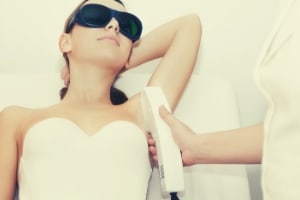
In the late 1800’s, epilation was a medical term for any type of hair removal. It came from the French word for tweeze, which is, “épiler.”
Hair removal in those days was more medically oriented than cosmetic, usually focused on removing ingrown hairs or hairs causing pain or functional impairment. There were many contraptions used to do this, including tweezers called, “epilation forceps,” which sounds a bit terrifying, if you ask me.
Early in the 1900’s, business people started to see the commercial potential of hair removal. Hair removal for cosmetic reasons became en vogue and beauticians dubbed “epilation specialists” began opening hair removal salons for women.
So what is epilation hair removal? In short, epilation refers to any hair method that removes hairs from the root. This includes electrolysis, laser hair removal, threading, chemical depilatory creams, and removal with mechanical devices called epilators.
What is an Epilator?

An epilator is a small electrical device that removes hair by the roots. It looks a lot like an electric shaver, but instead of cutting hairs off at the surface, it uses spring coils, discs, or plates to tweeze multiple hairs at once, getting the job done fairly quickly like with waxing.
It’s basically a hair plucking machine that’s used by both women and men to remove hair from legs, arms, face, pubic area, back, and other areas of the body.
Similar to waxing, epilators pull many hairs out by the root at once. So you get the same results as waxing. However, unlike waxing, using an epilator doesn’t affect the skin much, so usually causes less irritation.
How Do Epilators Work?
Epilators have springs, discs, or plates that move together and apart. When they touch each other, they can grasp hairs. And while they are grasping hairs, they are on a rotating head that pulls the hairs away from your body. This pulls many hairs out by the root at once.
Do Epilators Work?
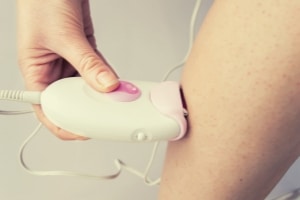
Good quality epilators work well. Think about it: does tweezing work well? That’s what an epilator essentially does: it’s tweezing on steroids.
Twenty or more discs or coils work at the same time, grabbing hairs and pulling them out at the root. Many epilators call pull out hairs shorter than a millimeter.
However, not everyone gets perfect results with epilating. A common problem is stubble after using an epilator. This happens because hairs are broken at the surface instead of pulled out by the root.
There are several reasons this could happen. One reason is using an epilator with too much power for your hair type. Finer hair requires less speed.
Another issue is epilating in the shower. When your hairs are weak they are more likely to break.
You need to make sure your epilator is well maintained and clean so it can grasp hairs well. Oil, dirt, makeup and the like can coat the epilator tweezers, making them slippery.
Overall, though, most name brand epilators really do work well to pull out hair. They give the same results of waxing for a fraction of the cost.
Now, like waxing, this can be a painful process. And if you are not careful, you can end up with ingrown hairs, so exfoliation is a must if you epilate. But on the bright side, you will be hairless for quite a while: anywhere from several days to a week to a month at a time. If you continue to epilate, hairs will begin to come in much thinner or stop growing at all over time.
How Long Will The Smoothness Last?
If you are using an epilator that works well and pulls your hairs out by the root, you will be hairless for quite a while: anywhere from several days to a week to a month at a time. It all depends on your hair growth cycle and your body. Some people just grow hair really quickly.
Most people who epilate regularly end up only having to remove hair a few times a month to maintain smoothness. If you continue to epilate for months, your hairs will begin to come in much thinner or possibly even stop growing at all over time.
Do Epilators Hurt?

When deciding on a hair removal method, there are tons of things to take into consideration. Cost, effectiveness, and time required for that method are all important to think about. However, if you are interested in using an epilator, the first issue you should think about is probably epilator pain.
So do epilators hurt? Yep! Epilators do hurt. No pain, no gain, right? Seriously though, epilating does hurt, especially at first. As your body gets used to it, pain will subside.
If you are uber sensitive to pain, epilators might not be for you. Or you might have to limit epilating to only certain areas of the body. Some women find it too painful on the face and bikini area, but have no problems with the arms or legs. Your mileage will vary! But for decades, women around the world have chosen epilators over less painful methods because it can be well worth it.
How painful is epilating?
Epilation is painful, but how much? I wish there was some type of epilator pain scale that would be correct for everyone, but the truth is that everyone is different.
However, the general consensus is that epilation “hurts like hell” the first time, but becomes more tolerable the more times you do it. Some people will never be able to deal with the pain to get through the first sessions, but for those who do, it ends up not hurting too much in the long run.
If you want an idea of how much it hurts initially, take a pair of tweezers and start plucking hairs like crazy. This is how epilation feels, but with many more tweezers.
Factors Impacting Epilator Pain
There are several factors that affect the level of pain felt with epilating as well. They include:
Area of the Body
The level of pain you feel can be drastically different, depending on the body part. Most people find that epilating the legs isn’t very painful. But pain levels can increase with areas like the underarms, bikini area, around joints, and the face.
Length of Hair
A general rule of thumb is that the longer the hair is, the more it will hurt when pulling it out with an epilator. Epilating as soon as the hairs are long enough will help reduce pain.
Pain Sensitivity
Everyone has different levels of pain sensitivity, developed through genetics and life experience. For example, people with red hair carry a gene that makes them feel some types of pain more but makes them less vulnerable to the spiciness found in peppers. Unfortunately, there is not a lot you can do about genetic susceptibilities to pain sensitivity.
Which Epilator You Use
An epilator that works well and gets the job done quickly will allow you to feel less pain overall. The lower quality models make people go over the same pack of hair multiple times to get the hairs out, which is NOT fun. Also, some models come with features like a massaging head that helps with pain as you epilate.
Stress and Anxiety
If you are stressed or anxious or feeling any other negative emotions like anger, your pain tolerance may be lower than normal.
Every Body is Different
So there are tons of factors that affect your pain perception when epilating. And there is a ton of variation in pain tolerance between people. To get an idea of the wide range of pain levels experienced when epilating, compare these two videos:
Why does epilating hurt so much?
Epilation removes hairs from the root. Essentially, that’s not a normal thing for the body. Hairs are there for a reason, or at least your nervous system thinks so. So when you pull them out, your sensory nerves sense a threat.
But luckily, those nerves don’t have the last say when it comes to experiencing pain.
Does epilation hurt more than waxing?
So how painful is epilation compared to waxing? Ask ten different women this question and you’ll get ten different responses.
For some women, it does hurt more than waxing. For others, it is the opposite. Some find waxing so painful they can’t handle it and find it a breeze to epilate. And vice versa.
Here’s a hint: take tweezers to an uncharted territory such as your ankles. Pluck a few hair quickly. That’s how epilating feels, but you’ll have many more tweezers pulling at once.
With epilating, you’ll feel the pain longer, since waxing just rips out so many hairs at once. Epilating takes it slower, pulling out less at once. The pain is usually not as intense all at once.
Does epilating get less painful?
Epilating does get less painful after the first session. After a few session, most users report little to no pain when using an epilator.
Benefits of Using an Epilator
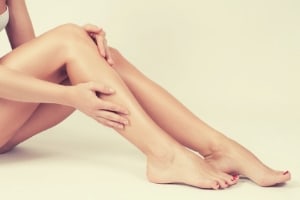
There are many benefits to epilating compared to other hair removal methods including being a do-it-yourself method, time savings, low cost, better for your skin, convenience, it’s easy to master, and reduces waste.
Do-it-Yourself
If you’ve been going to a professional for hair removal, you might be excited to learn that you can get the same benefits at home with an epilator. Fewer trips to the salon mean more time for other activities and more money in your pocket. Also, it’s always nice to not have to pay someone to see you half naked and/or rip your hair out.
Time Savings
When you use hair removal methods that pull the whole hair out by the roots, it takes much longer for hair to reappear than with shaving and depilatory creams. One epilator session can provide smooth, hairless skin for days or weeks.
Low Cost
Once you buy an epilator, that’s it. You basically have no other costs for hair removal until it needs to be replaced. In contrast, think of how much people often spend on waxing, razors, and depilatory creams over the course of a few years.
Better for Skin
Unlike waxing, shaving, and depilatory creams, epilation doesn’t usually affect the skin since you are gripping the hairs from above the skin. So you’re less likely to have skin irritation, rashes, and breakouts.
Convenience
Most epilators are the size of electric razors or smaller. They fit in small purses and bags for hair removal on the go. Although a loofa and exfoliation wash is a great thing to have too, it’s usually easier to travel with an epilator than with messy stuff like shaving cream, wax, and stinky depilatory creams.
Easy to Master
There is no steep learning curve for hair removal with an epilator. Use it for a single session or two, and you will pretty much be a pro.
Less Waste
There is nothing to buy regularly or throw away with epilation. It’s about as tree-huggin’ and Earth-friendly as you can get when it comes to hair removal.
What epilator do you recommend?
The epilator I’m currently using and love is the Braun Silk-épil 9. This is a high-end cordless wet and dry epilator with two speeds and an LED light. It can be used pretty much everywhere except around the eyes and works well on all hair types.
For beginners who want to ease slowly into using an epilator, I recommend the Emjoi EpiSlim. This is a high quality but small epilator that works best for the face, underarms or bikini area. The small size makes it affordable so you can test out epilation without spending a lot. If you decide you love epilation, you can upgrade to another epilator later and use this one for the face or as a travel epilator.
If you want a full size but not expensive beginner epilator, I’d go with the Braun Silk-épil 3.
More Epilator Questions
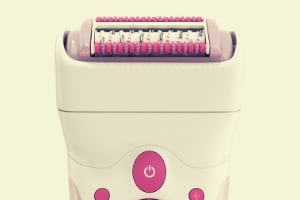
Have more epilator questions? I dive deep into the answers of frequently asked questions in the following blog posts:
What are the different types of epilators?
Does epilation reduce hair growth?
What are the pros and cons of using an epilator?
What are the risks of using an epilator?
Does epilation cause ingrown hairs?
Do epilators work on fine hair?
Can I use an epilator on stomach hair?
Can I use an epilator on the bikini area?
Can I use an epilator on my face?
What’s the best epilator for women’s facial hair?
Where to buy an epilator in stores?
How can I make epilating less painful?
How do I use an epilator properly?
How can I prevent side effects and soothe skin after epilation?
Thanks for reading! I hope your epilation journey goes smoothly!! 😉
Want to remember this? Pin this to your favorite Pinterest board so you can find it later!
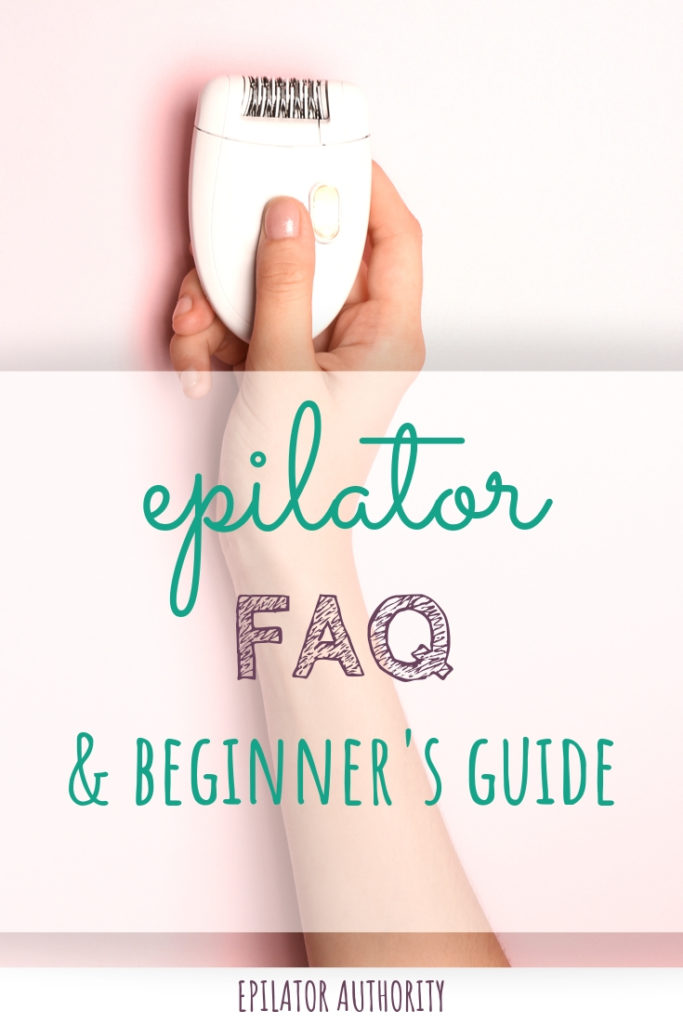
References
Murray Bookchin: Our Synthetic Environment
Cleveland Clinic: Removing Unwanted Hair
George Thomas Jackson: A Practical Treatise on the Diseases of the Hair and Scalp
Mayo Clinic: Hair Removal Safe for Kids, But First Consider Pros and Cons
National Health Service: Ingrown Hairs
U.S. Food and Drug Administration: Removing Hair Safely